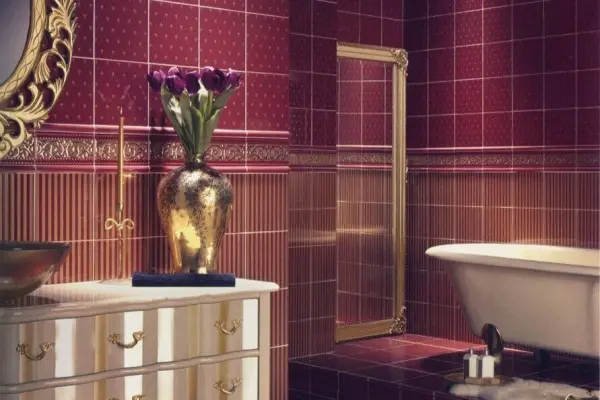The advantages of ceramic tiles make this finishing material a market leader for over 5,000 years. In 2025, global production exceeds 12 billion square meters, confirming the enduring popularity of tiles. The benefits of ceramic tiles cover a wide range of characteristics – from water resistance to eco-friendliness. It should be noted that modern firing technologies at temperatures of 1100–1200°C create a material with unique properties.
The cost of high-quality ceramic tiles ranges from $8–15 per square meter for basic collections to $50–150 for premium segments. The advantages of ceramic tiles make these investments worthwhile for decades to come.
Main Advantages of Tiles: 7 Key Properties
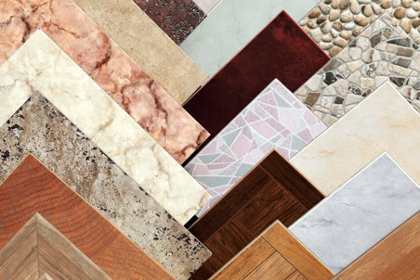 The characteristics of ceramic tiles determine their popularity among builders and designers. Let’s explore the key qualities of ceramic tiles:
The characteristics of ceramic tiles determine their popularity among builders and designers. Let’s explore the key qualities of ceramic tiles:
- Water Resistance – water absorption from 0.05% (porcelain tiles) to 20% (ceramic tiles)
- Durability – service life of 15–50 years with proper installation
- Eco-Friendliness – natural materials, up to 20% recycled raw materials
- Fire Resistance – non-flammable, withstands temperatures up to 1000°C
- Hygienic Properties – easy to clean, antibacterial surface
- Strength – compressive strength of 200–400 MPa (2000–4000 kg/cm²)
- Versatility – suitable for interior and exterior finishing
These properties of ceramic tiles make them a universal solution for any interior design task. In practice, I often notice: properly selected ceramics last for decades without losing their aesthetic qualities.
Water Resistance and Hygienic Properties of Ceramic Tiles
Ceramic tiles are distinguished by high water resistance. The water absorption of high-quality tiles is less than 0.5%, making them ideal for wet environments. In my work with private clients, I often notice: properly chosen ceramic tiles for bathrooms last 25–30 years without needing replacement.
Success Story: Transforming a Family Home
"The smooth surface of glazed tiles prevents the growth of bacteria and fungi. This is critically important for medical facilities and food production environments" – note ceramic industry experts.
The hygienic properties of tiles are ensured by the absence of pores on the surface after firing. Chemical resistance allows the use of aggressive cleaning agents without damaging the coating.
Wear Resistance and Durability of Ceramic Coating
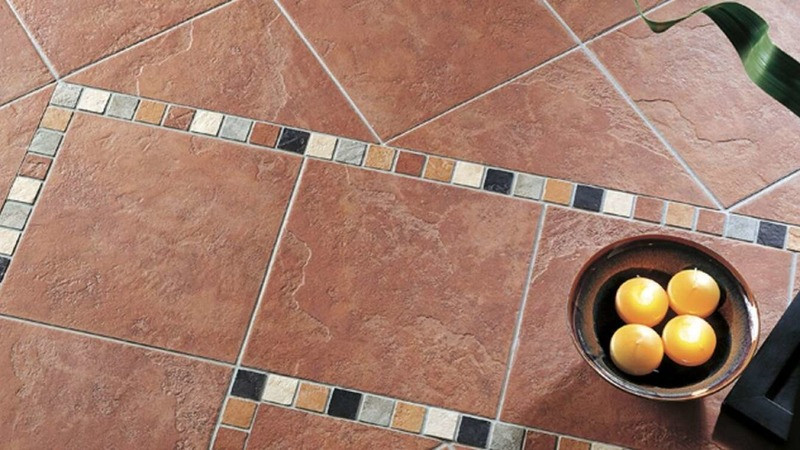 Tiles demonstrate high wear resistance according to the PEI classification from I to V (applicable only to glazed ceramics). Class IV floor tiles withstand heavy loads in commercial spaces. It is known that technical porcelain tiles have a compressive strength of 200–400 MPa, significantly surpassing many natural materials.
Tiles demonstrate high wear resistance according to the PEI classification from I to V (applicable only to glazed ceramics). Class IV floor tiles withstand heavy loads in commercial spaces. It is known that technical porcelain tiles have a compressive strength of 200–400 MPa, significantly surpassing many natural materials.
Ceramic coating maintains durability due to the high hardness of the surface (7–8 on the Mohs scale). Abrasive loads have virtually no impact on the appearance of high-quality material. Temperature fluctuations from -50°C to +70°C do not deform the biscuit structure – the term used for the ceramic body in production.
| PEI Wear Resistance Class | Application Area | Foot Traffic | Service Life |
|---|---|---|---|
| PEI I | Wall tiles, bathrooms | Low | 15–20 years |
| PEI II | Residential spaces | Moderate | 20–25 years |
| PEI III | Kitchens, hallways | Medium | 25–30 years |
| PEI IV | Offices, stores | High | 30–40 years |
| PEI V | Airports, train stations | Very high | 40+ years |
This classification helps choose ceramics based on the expected load. According to studies on the durability of ceramic materials, selecting the appropriate wear resistance class ensures long-term use without loss of aesthetic qualities. In a recent office building project, PEI IV tiles lasted 12 years without visible damage under daily foot traffic of 500+ people with proper maintenance.
Eco-Friendliness and Fire Resistance of Ceramic Tiles
Tile coating demonstrates high eco-friendliness throughout its lifecycle. Ceramic production is waste-free – waste from one process becomes raw material for another. Ceramics made from natural raw materials do not emit harmful substances even when heated. The modern industry actively develops sustainable ceramic production standards, confirming the industry’s commitment to sustainable development principles.
"Modern factories use recycled materials for up to 15–20% of the total raw material volume, gradually reducing the carbon footprint of production" – data from the European Ceramic Industry Association for 2024.
The fire resistance of ceramic tiles allows their use for cladding fireplaces and stoves. Finding a material with such characteristics is not always easy. However, ceramics effectively handle extreme conditions.
Practicality and Versatility of Tiles
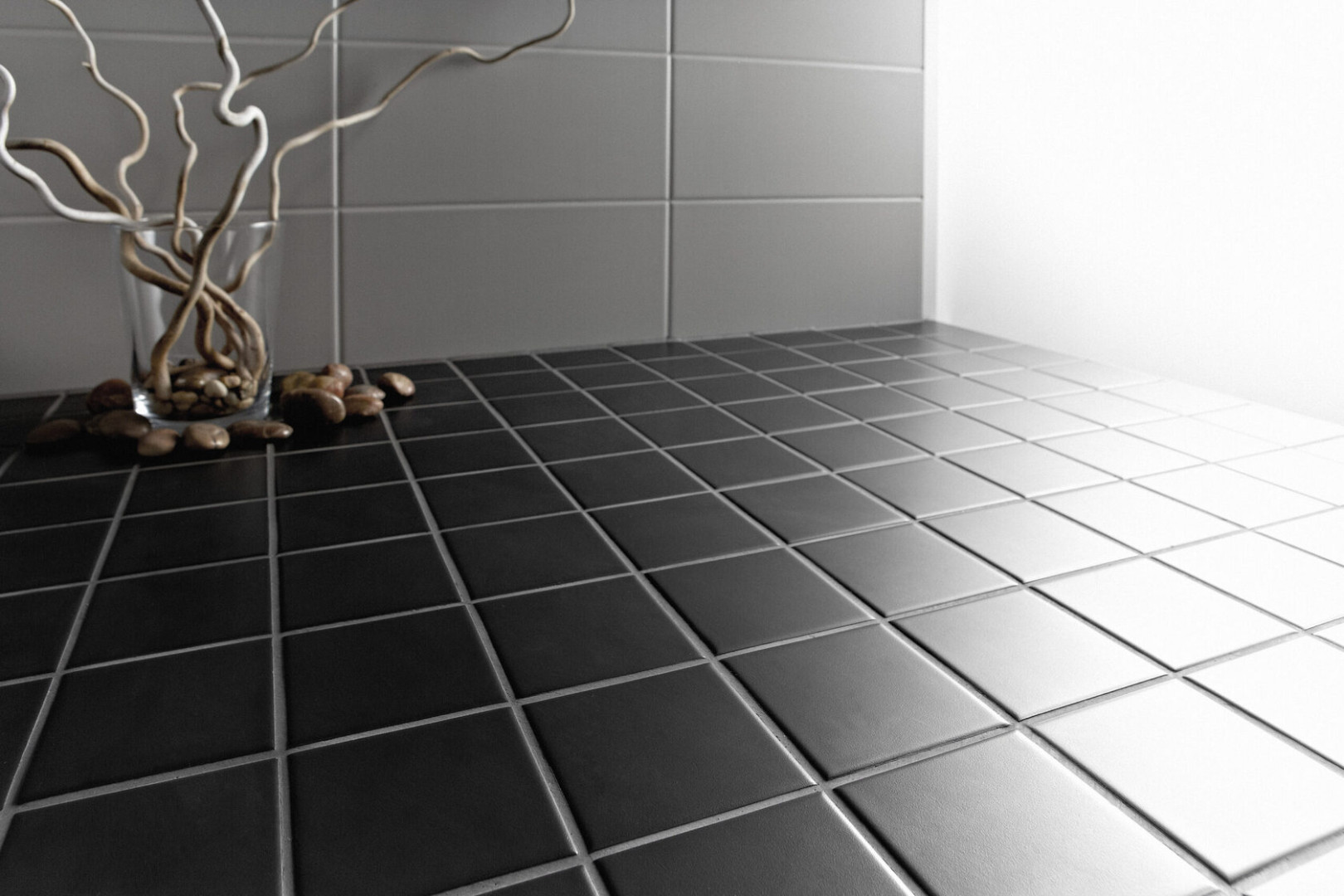 The practicality of ceramic tiles is evident in their ease of maintenance and installation. The features of tile coating allow its use both indoors and outdoors. Considering the design features of modern collections, a single material can mimic wood, stone, metal, or fabric.
The practicality of ceramic tiles is evident in their ease of maintenance and installation. The features of tile coating allow its use both indoors and outdoors. Considering the design features of modern collections, a single material can mimic wood, stone, metal, or fabric.
The friction coefficient of high-quality floor ceramics meets the R9–R13 classification (from 0.3 to 0.8+). This ensures safe movement even in wet conditions with the correct class selection. Wall tile coatings are easy to clean and require no special maintenance.
"In one of our recent hotel renovation projects in Miami, we used porcelain tiles with wood imitation in high-humidity areas. After three years of use, the material retained its original appearance, unlike natural wood in adjacent spaces" – share practicing architects.
Frost Resistance and Temperature Stability
The frost resistance of porcelain tiles allows their use in various climatic conditions. In one project last season, unglazed ceramics successfully withstood 200+ freeze-thaw cycles without visible damage, exceeding minimum standard requirements.
Temperature fluctuations do not affect the geometry of high-quality ceramics when installation technology is followed. Thus, cladding ceramics are suitable for outdoor use in any climatic zone. It should be noted that frost resistance directly depends on the material’s water absorption – the lower this indicator, the higher the resistance to freezing.
Practical Tips: What to Consider When Choosing Tiles
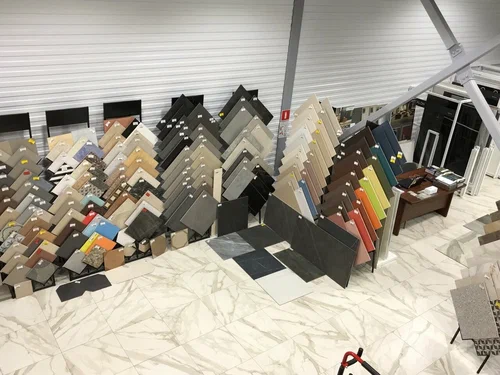 Choosing a ceramic coating requires considering several key factors to achieve optimal results:
Choosing a ceramic coating requires considering several key factors to achieve optimal results:
- Surface Evenness – deviations of no more than 2 mm per meter for large-format ceramics, base strength of at least 15 MPa
- Choice of Adhesive and Grout – compatibility with the material type, operating conditions, and load class
- Expansion Joints – requirements depend on the project, area, building type, and climatic conditions
- Compatibility with Underfloor Heating – verification of the material’s thermal expansion (typically up to +27°C for residential spaces)
Proper installation planning guarantees the durability and aesthetics of the finished coating. The advantages of tiles are fully realized only when installation technology is followed.
Potential Limitations of Ceramic Coating
Despite all the advantages of ceramics, some structural features of the material should be considered:
- Cold Surface – addressed by underfloor heating systems
- Brittleness Under Impact – heavy objects may cause chips
- Base Requirements – requires a perfectly even base
- Complexity of Replacement – removing individual elements is labor-intensive
These features do not diminish the advantages of tiles but help make an informed choice. The qualities of ceramic tiles significantly outweigh the limitations when applied correctly.
In 2023, the Johnson family from Texas decided to renovate their kitchen in a 1960s home. They chose porcelain tiles with marble imitation costing $28 per m². Installation took 3 days, including base preparation. The material’s water resistance resolved issues with leaks near the sink, and its PEI IV wear resistance withstood active use by a family of five. After 18 months, the tiles look brand new despite daily cleaning and occasional impacts from dishes. According to a realtor’s estimate, the high-quality finish could increase the home’s value by 3–5%, amounting to approximately $6,000–8,000 in their case.
Conclusion
The advantages of using ceramic tiles make them a universal solution for modern construction. From water resistance to eco-friendliness – every benefit of ceramics is backed by decades of practical application.
The advantages of ceramic tiles are particularly evident in the long term. Investments in high-quality ceramic coating pay off within 5–8 years of use, depending on usage intensity. Meanwhile, the material continues to serve for another 15–40 years without losing its core performance qualities.
When choosing between different finishing materials, remember: ceramics are not just a beautiful coating but also a practical solution for creating a healthy indoor climate. The advantages of tiles are time-tested and supported by modern production technologies.
